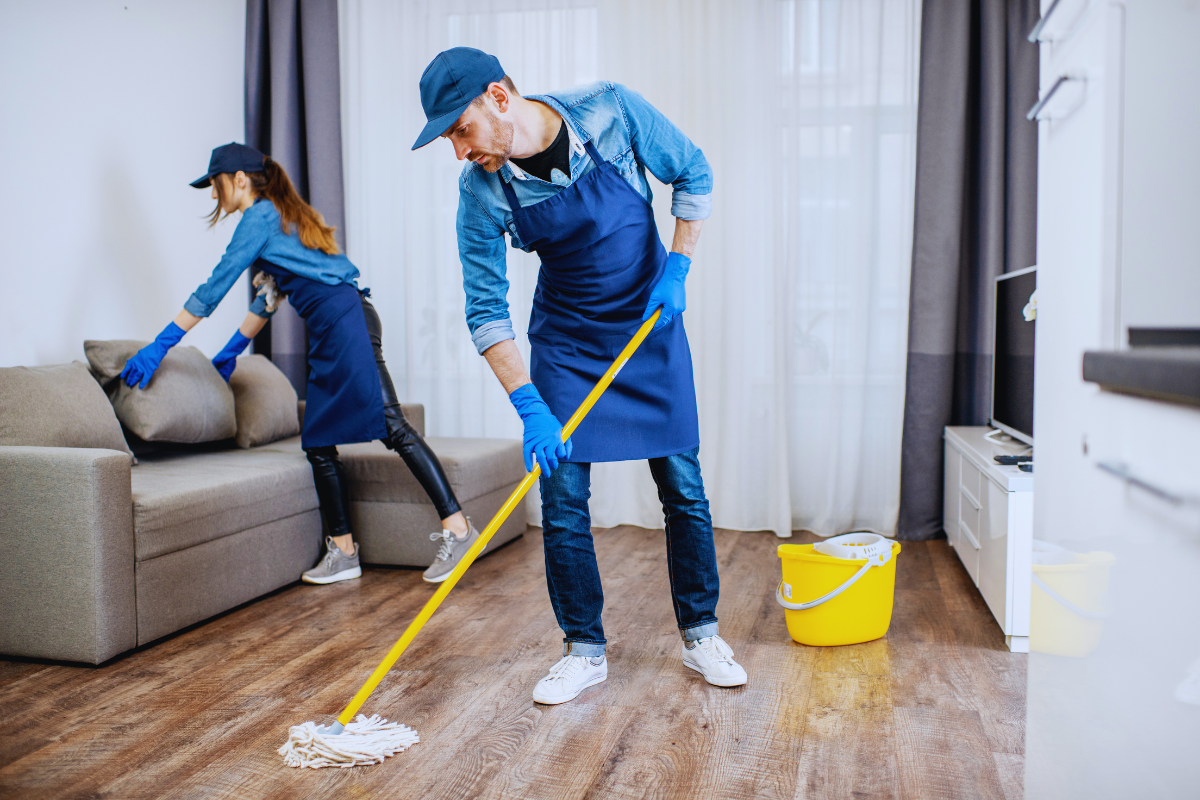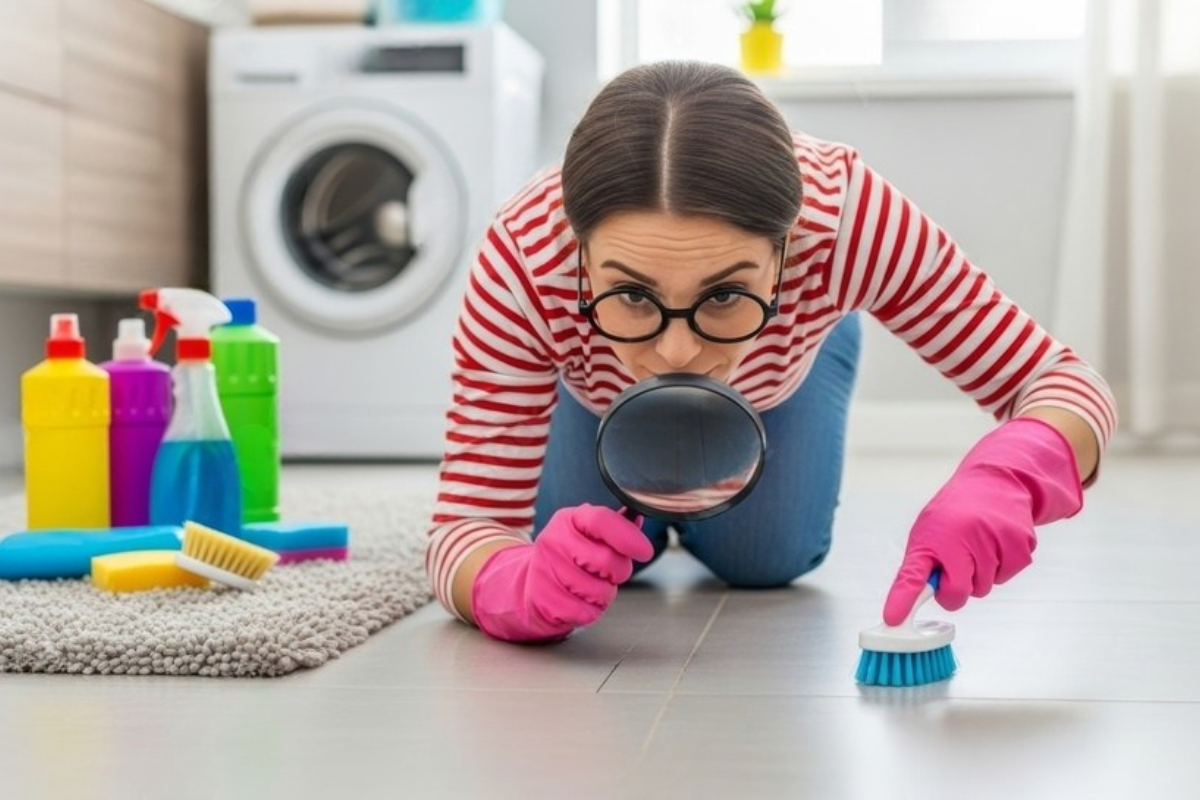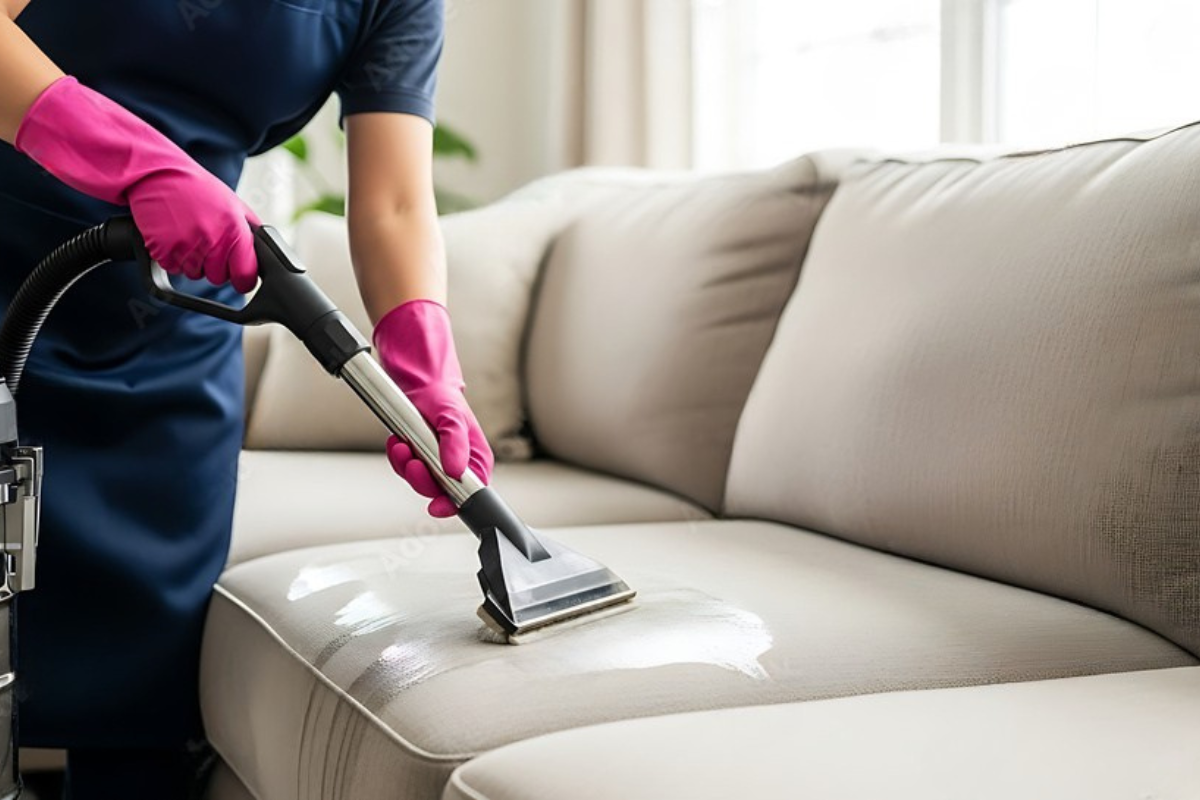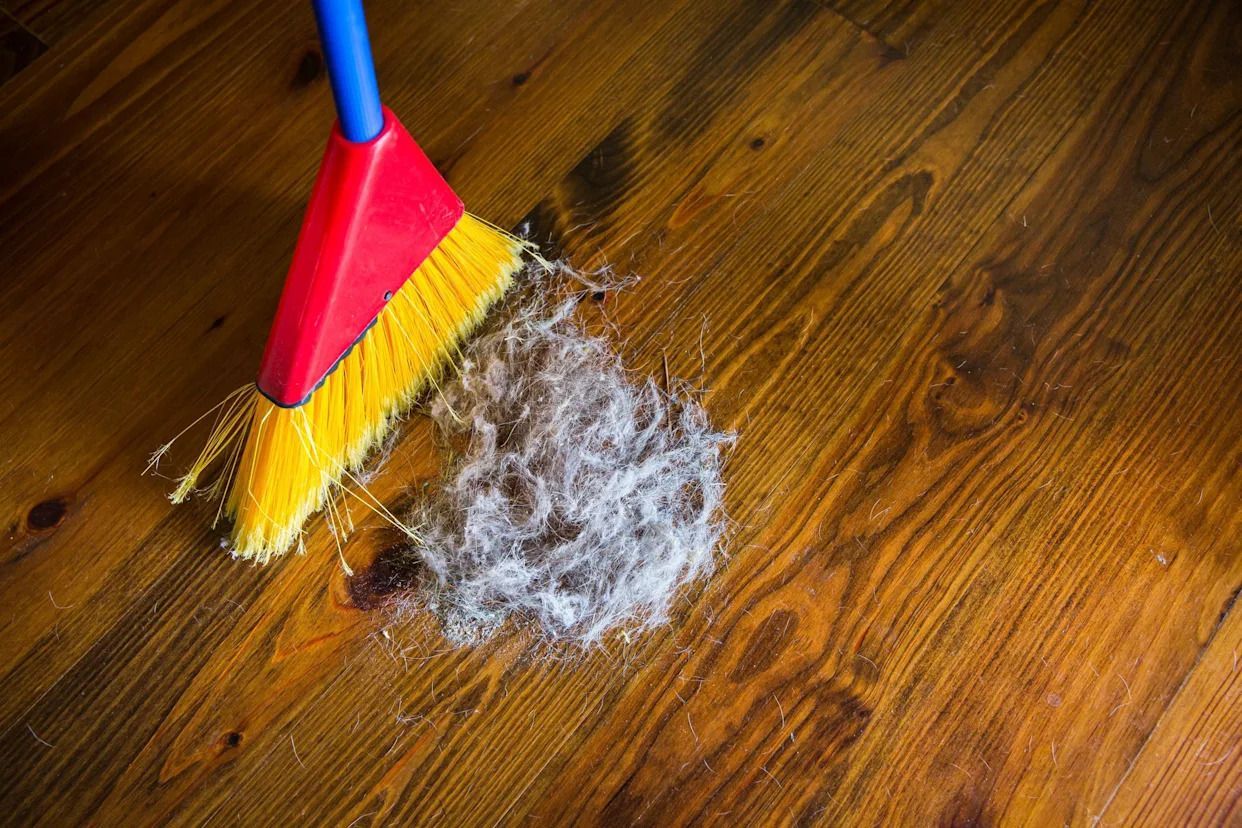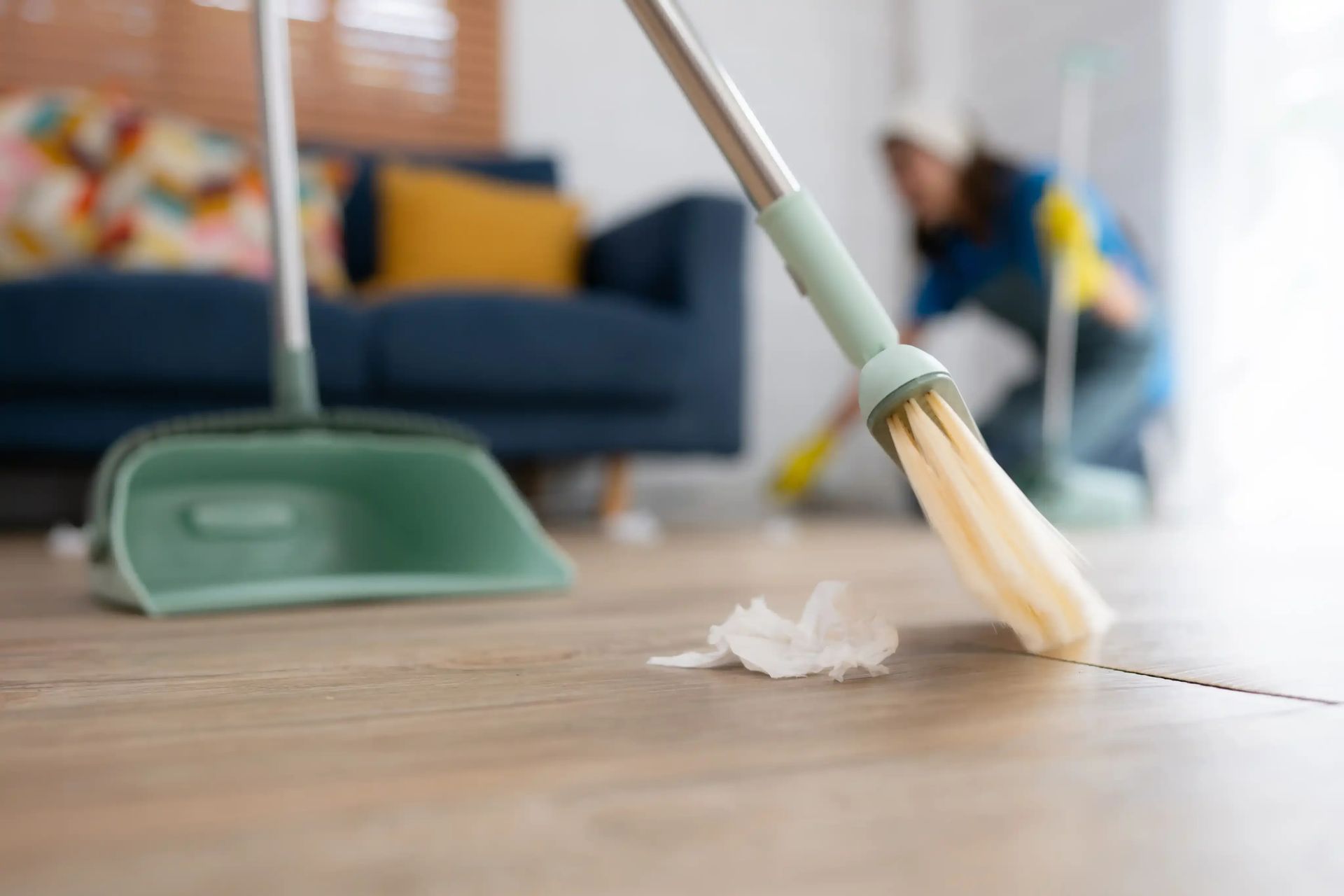Transform Your Cleaning Routine: Professional Secrets for a Fresh, Germ-Free Kitchen
The kitchen is often called the heart of the home, a place where meals and memories are made. But as a high-traffic area, it's also a prime spot for germs and bacteria to thrive. Keeping your kitchen not just visibly clean but hygienically clean is crucial for the health and safety of your family. Here at WhatAMaid LLC, we understand that a truly clean kitchen goes beyond a quick wipe-down. This comprehensive guide will reveal professional secrets to transform your cleaning routine, ensuring a fresh and germ-free kitchen every day.
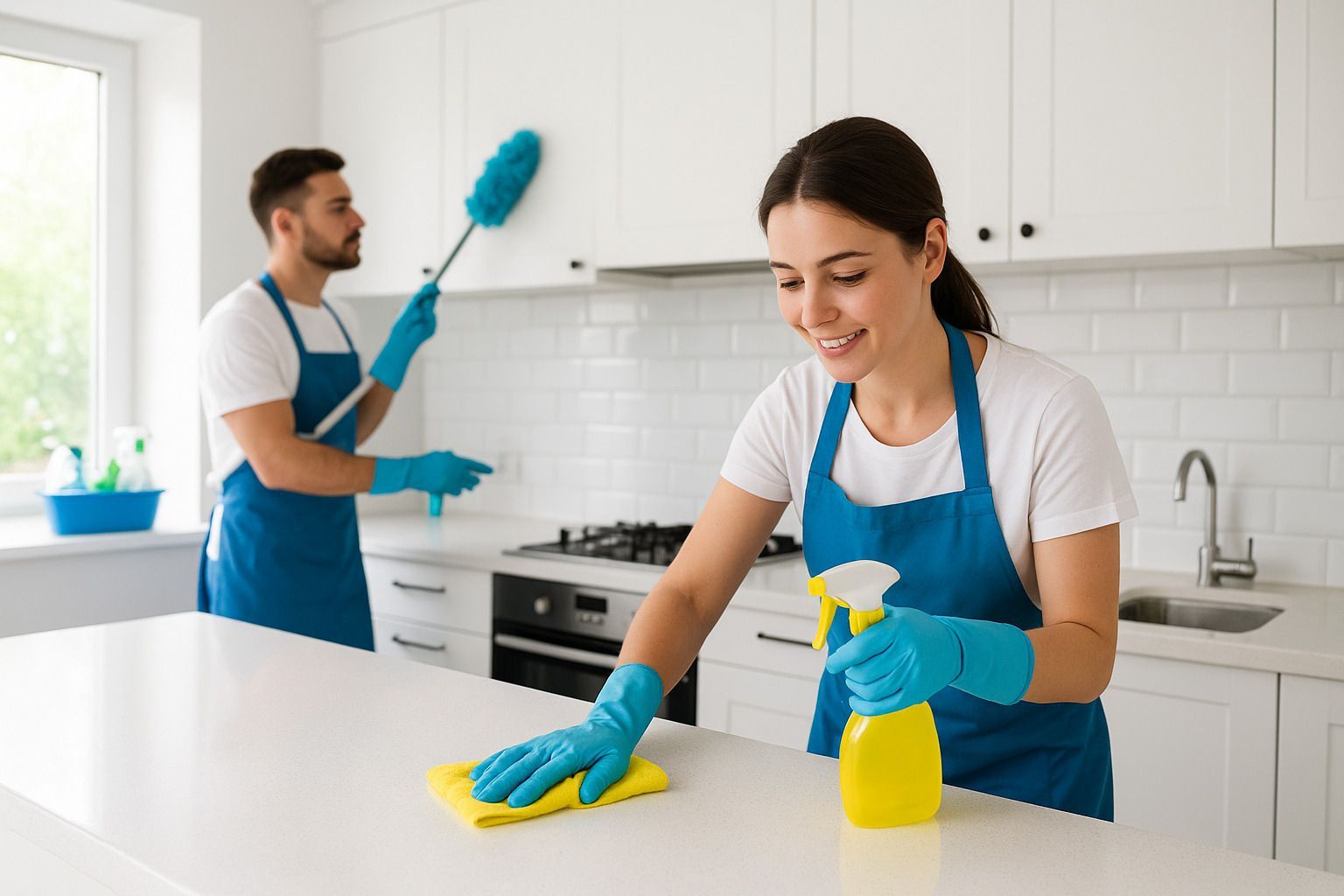
The "Top-to-Bottom, Left-to-Right" Rule: A Professional's Approach
One of the most effective strategies professional cleaners use is the systematic "top-to-bottom, left-to-right" method. This ensures that you're not re-contaminating surfaces you've already cleaned. Dust and debris from higher surfaces will naturally fall downwards, so starting high and working your way down is key. Begin with dusting light fixtures, the tops of cabinets, and the refrigerator. Then, move on to countertops, appliances, and finally, the floor.
Declutter for a Deeper Clean
Before you even pick up a sponge, take some time to declutter. A cluttered kitchen is not only harder to clean but can also harbor more germs. Remove any items from your countertops that don't need to be there. This creates a clear workspace for both cooking and cleaning. An organized kitchen is the first step towards a cleaner, more hygienic space.
The Power of Natural Cleaning Solutions
You don't always need harsh chemicals to get a deep clean. In fact, many professional cleaners rely on the power of natural ingredients you probably already have in your pantry.
- Vinegar: A versatile and effective natural disinfectant, white vinegar is excellent for cutting through grease and grime on many surfaces. A solution of equal parts water and vinegar can be used on countertops (except for natural stone like marble), appliances, and even floors.
- Baking Soda: This gentle abrasive is perfect for scrubbing away tough stains without scratching surfaces. Make a paste with water to clean sinks, ovens, and even stained grout.
- Lemon Juice: With its natural acidity and antibacterial properties, lemon juice is great for cleaning and deodorizing. Use it to clean cutting boards, remove odors from your garbage disposal, and add a fresh scent to your cleaning solutions.
For a powerful, natural all-purpose cleaner, mix equal parts water and white vinegar in a spray bottle and add a few drops of your favorite essential oil for a pleasant scent. This simple solution is a staple in many professional cleaning kits.
A Systematic Guide to a Germ-Free Kitchen
Now, let's break down the cleaning process into manageable steps, incorporating professional techniques and secrets along the way.
Daily Tasks for a Consistently Clean Kitchen
Consistency is key to preventing the buildup of dirt and germs. Incorporate these simple tasks into your daily routine:
- Wipe down countertops: After every meal preparation, wipe down your countertops to remove crumbs and spills.
- Clean the sink: The kitchen sink can be one of the germiest places in your home. After washing dishes, give it a quick scrub with soap and water.
- Sweep the floor: A quick daily sweep will prevent the accumulation of dust and food particles.
- Address spills immediately: Wiping up spills as they happen prevents them from becoming sticky, hard-to-clean messes.
Weekly Deep-Cleaning Checklist
Set aside some time each week for a more thorough clean. This is where you'll tackle the areas that don't need daily attention but are crucial for a hygienic kitchen.
1. Appliances: Inside and Out
- Microwave: To easily clean the inside of your microwave, heat a bowl of water with lemon slices for a few minutes. The steam will loosen caked-on food, making it easy to wipe away.
- Refrigerator: Wipe down the exterior, paying attention to the handles. Once a month, it's a good idea to empty the fridge, wipe down all the shelves and drawers, and discard any expired food.
- Oven: For a greasy oven, create a paste of baking soda and water. Apply it to the interior and let it sit overnight before scrubbing and wiping clean.
- Dishwasher: To keep your dishwasher running efficiently and smelling fresh, clean the filter regularly and run an empty cycle with a cup of white vinegar on the top rack.
2. Countertops and Backsplash
Use a cleaner appropriate for your countertop material. For a deep clean and disinfection, consider a two-step process of cleaning with soapy water first, then using a disinfecting spray. Be mindful of using harsh chemicals on delicate surfaces like natural stone.
3. Cabinets and Drawers
Wipe down the exterior of your cabinets to remove grease and fingerprints. A mixture of warm water and a mild dish soap is often effective. Periodically, empty your drawers and cabinets to wipe out crumbs and dust.
4. Sink and Faucets
Give your sink a thorough scrubbing with baking soda to remove stains and buildup. Don't forget to clean and disinfect the faucet handles, as they are a high-touch area.
5. Floors
After sweeping or vacuuming, mop the floor with a suitable cleaner. Pay extra attention to the areas under cabinets and around appliances where dirt and grime tend to accumulate.
Common Kitchen Cleaning Mistakes to Avoid
Even with the best intentions, it's easy to make mistakes that can compromise the cleanliness of your kitchen. Here are a few common pitfalls to avoid:
- Using one cloth for everything: This is a surefire way to spread germs from one surface to another. Use different cloths for different tasks to prevent cross-contamination.
- Neglecting high-touch areas: Cabinet handles, light switches, and appliance buttons are often overlooked but are hotspots for germs.
- Forgetting to clean your cleaning tools: A dirty sponge or mop will only spread bacteria around. Sanitize your sponges regularly by microwaving them while damp for a minute, and wash your cleaning cloths frequently.
- Using harsh chemicals on the wrong surfaces: Strong cleaners can damage delicate surfaces like marble or stainless steel. Always read the label and test a new cleaner on a small, inconspicuous area first.
When to Call in the Professionals
While these tips will undoubtedly elevate your kitchen cleaning game, sometimes life gets in the way. If you find yourself short on time or simply want the peace of mind that comes with a professional deep clean, consider our expert cleaning services. The team at WhatAMaid LLC is equipped with the knowledge and tools to leave your kitchen sparkling and sanitized.
A clean kitchen is a happy and healthy kitchen. By incorporating these professional secrets into your routine, you can create a space that is not only beautiful but also a safe environment for you and your loved ones. For any questions or to schedule a cleaning, don't hesitate to contact us.
Frequently Asked Questions
How often should I deep clean my kitchen?
While daily upkeep is essential, a thorough deep clean is recommended at least once a month. However, this can vary depending on how often you cook and the size of your household. A seasonal deep clean, four times a year, is also a good practice to tackle often-neglected areas.
What is the best way to clean greasy kitchen cabinets?
A simple and effective method is to use a mixture of warm water and a degreasing dish soap. Apply with a soft cloth, then rinse with a clean, damp cloth and dry thoroughly. For tougher grease, a paste of baking soda and water can be gently applied and then wiped away.
How can I naturally disinfect my kitchen countertops?
A solution of equal parts white vinegar and water is a great natural disinfectant for many countertop surfaces (avoiding marble). For a powerful duo, you can spray the surface with vinegar, wipe it clean, and then spray it with a 3% hydrogen peroxide solution, letting it air dry. Always use separate bottles for vinegar and hydrogen peroxide.
